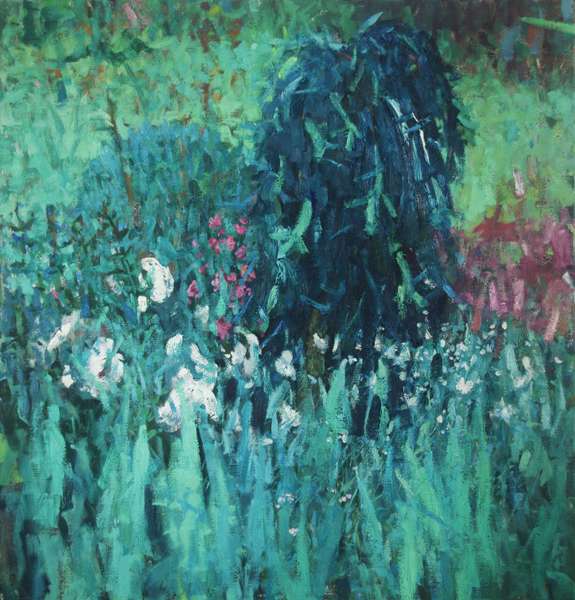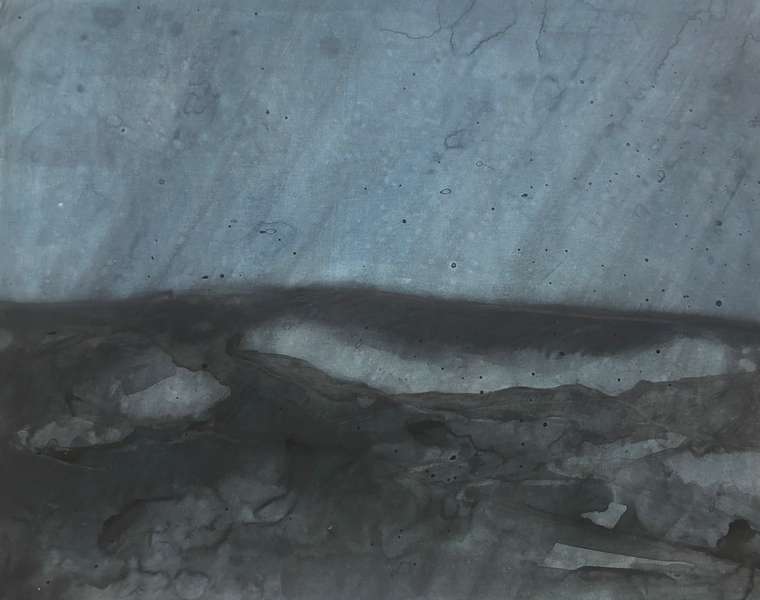Outside In


What do a dog, a painting, and a pot of flowers have in common? Many of us are familiar with how nonhuman company can put us back in touch with ourselves, recontextualising our attunement to our environment. The popularity of houseplants before and during lockdown is no passing fad, but our predominantly urban population reconnecting with nature. The ritual of care, the reward of growth: these are the pervasively inviting characteristics of living with plants. And their aesthetic appeal of course: The Guardian’s ‘houseplant of the week’ series features delectable species such as the variegated monstera, ‘the picasso of houseplants’. There is increasing documentation on the benefits being surrounded by expansive vistas and splashes of colour has for our mental and physical health.

Scottish painter Peter Doig’s landscapes apprehend nature from the midst of its dense forms – with phenomenal popularity and critical success: they are among the highest selling contemporary paintings in the world. David Hockney’s blockbuster exhibitions at the Royal Academy and Tate in recent years, featuring the English seasons and his native Yorkshire landscape, prove that the appetite is strong for art that renews our perception of the natural world. It’s the beginning of the new year, in the heart of winter: maintaining contact with colour and energy doesn’t have to include growing green fingers, or access to a museum.

Maybe you’ve heard of forest bathing, a Japanese well-being practice based on the premise that time spent in nature allows for the opening up of the senses, making for a profoundly rejuvenating experience: distilling an idea most of us intuitively hold, though can’t always put into practice. In our recent interview with Tokyo-born artist Emiko Aida, she reflected on her relationship to nature living and working in London. She also expanded on being between cultures and nature, and the foundational role of the latter in Japanese life, spirituality, and art – as well as in her own practice. In moving to Dundee from London, swapping daily encounters with strangers for those with winding paths and tangled leaves, Nicola Wiltshire told us she discovered a surprising continuity in the emotional themes she explored in her painting.

Those famous flowers of art history, Monet’s water lilies and Van Gogh’s sunflowers, marked major turning points in the representation of subjectivity on the canvas. In this way they’re akin to the original evolution of flowers: nature’s innovation of blooming, colourful buds was a major turning point in the diversification of plant life, and the possibility of all life on the planet. This range of contemporary work by NewBlood artists – of houseplants, flowers, landscapes, and abstractions, which won’t wilt – bring the outdoors in. The breadth of styles displayed here shows the inspiration found in the dynamism of the natural world, resulting in works with a sense of the infinite and the intimate alike. Enjoy browsing this garden earthly of delights.

The montserrat, or cheese plant, is graced with a sense of drama in this striking backlit portrait of the plant by Ed Saye (above). Tyler Watson plays with perspective in his painting of an interior, foregrounding the geometric play of leaves against floor tiles in a fresh palette.


‘Winter Flowers’ are a gift in Julia Blackshaw’s typically tender portrait. Nicola Wiltshire and Yasmin Davidson are both Scotland-based, and inspired by the country’s landscapes. They also both bring an element of ritual to their work: the layering of Yasmin’s collaged elements; Nicola’s process of making her own canvases and paints. The bold oranges and reds of ‘North Uist Still Life’ and ‘Sun Dance’ (above) exude warmth.

Anyck Alveroz Kerloch delights in the romance of flowers extracted from their natural habitat, using a black backdrop to capture the sensuousness of form and colour.


A glance into nature is a refreshing immersion in Glib Franco’s ‘Garden.’ Sophie Baker’s glowing ‘Floral Window for a Nymph’ (above) is a portal into enchanted zones in serene green. Fantasy, delight, magic are the key in Sean Madden’s wax-cast bronze sculpture ‘Supernatural’.

Perhaps you’d enjoy the winter light – or lack thereof – reflected back at you? This imbued atmosphere by Małgorzata Lapsa-Malawska is created through the watery imprinting of ink. Alternatively, Niall Stevenson ‘Study for a Landscape’ looks forward to spring: the spaciousness of the outdoors is introduced through the painting’s airy composition and the optimism of light tones.


The compounded potentiality of the bud fuels this abstract work on a large scale by Agata Czeremuszkin-Chrut, ‘Flowers 3’. In ‘Juniper Season’, Emma Louise Grady transfigures nature’s microcosm into a decorative display: could it be the sub-vegetative level of the microbial that inspires the gorgeousness of brushwork rendering these forms? Afzal Shaafiu harnesses the vitality that all of these works emanate into a mosaic of organic and inorganic forms: nature painting for the digital age, lushly coloured like the currents of rock pools. Here the introspective surface of the physical world is experienced omni-directionality – as if music, enveloping the viewer.
Words by Maggie


